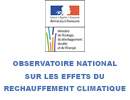Is the World Our Oyster? Socio-Economic Analysis of GHG Emissions Due to Tourist and Recreational Travel and Possible Limitation Strategies
Is the World Our Oyster? Socio-Economic Analysis of GHG Emissions Due to Tourist and Recreational Travel and Possible Limitation Strategies
Whether in research or in policies regarding climate change, tourism has, up to very recently, attracted very little attention. Many economic sectors underpin tourist activity, yet many of them dedicate only part of their activities (food, transport, etc.) to it. Tourism is never identified as such in emissions inventories and planned emission limitation measures never explicitly make it a target. This “special status” no longer appears possible in a post-Kyoto negotiation world:
- the contribution of tourist activity to global emissions is far from negligible. Gössling (2002) has estimated the contribution of tourist transport, accommodation and activity at less than 5.3% of CO2-e from anthropic activity.
- the said contribution is growing, in contrast with the stabilisation or reduction observed in other sectors. Tourism is a growing source within another growing source (transport) of greenhouse gas emissions.
- the objective of cutting GHG-emissions by a factor of 4 by 2050 helps highlight the growing impact of air transport and trends incompatible with reaching this objective.
Most of the work has dealt with how tourism impacts climate change. In contrast, markedly less research has focused on the connection between tourism and transport and GHG emissions. The aim here is thus to develop talking points and methods capable of bringing tourism into negotiations on the reduction of GHG emissions: by assessing its contribution and becoming familiar with its determinants, as well as by analysing limitation strategies suited to its environment (individual mobility) strong international component, possible conflicts with other sustainable development objectives.
By choosing to broach the issue from the standpoint of tourism, as opposed to other sectors, is conducive to this in several respects:
- tourism is governed by social practices and motives, which cannot be broached through sector-specific analyses. Assessment of how tourism contributes to GHG emissions has been carried out with relative ease based on data derived from sector-specific studies, in particular on origin/destination transport, which reflects most of the said emissions. However, essential work remains to be conducted with regard to how this contribution breaks down, by category of tourism, social group, destination, etc. This process is particularly important in establishing the foundation from which burden-sharing principles will be derived, in accordance with emission-control policies;
- for the aim is to complete the sector-specific emissions inventories, which are first and foremost, production sector inventories, using approaches focused on consumer activity and lifestyles. Along with the prospect of more constraining GHG-reduction targets comes that of demand for arbitration between major sectors, as well as within each sector.
- this burden-sharing and the need for arbitration, most often underlying and never negotiated, also raises social equity issues: a minority of frequent travellers is responsible for a considerable proportion of air transport emissions, whereas four out of every ten French people do not go on holiday each year.
| Coordinators |
Guislain Dubois TEC Marseille |
| Funding |
MEEDDAT
|




